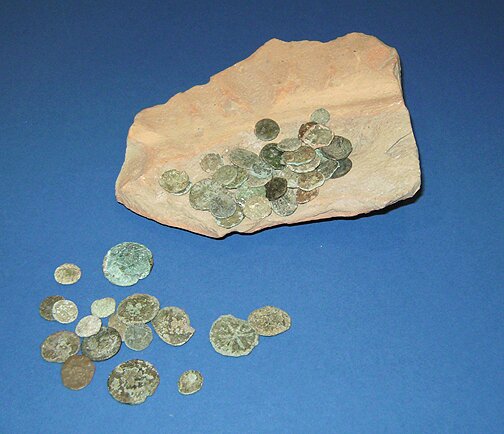|
|
| |
|
|
From Prehistoric to the 17th Century
|
| This section shows some of the items on display which reflect Coggeshall's very early history. The items, we believe, have come from the surrounding areas. The flints, axes and pottery came from the collection of the late John Soanes Gardner, a local historian and archaeologist, whose work was very well respected in Essex historical and archaeological circles. |
|
|
|
Top
|
 |
|
Bronze age tools found near Coggeshall.
The top one is a complete axe head. On the left is just the top of an axe and on the right is the broken blade of a bronze dagger. |
|
|
|
Roman
|
|

|
|

|
| A dish with a thumbprint decorated top-edge which holds a collection of small denomination coins typical of those in circulation during the 3rd and 4th centuries. Many of these coins were minted in the reign of Constantine AD 303-337 |
|
A tile that bears the imprint of the paw of a domestic cat thought to date between 300-400 AD. It is probable that the domestic cat arrived on these shores with the Romans. |
| |
|
|
|

|
A piece of a Roman mosaic was called a tessera (plural tesserae). They were made of natural materials, so the range of colours was limited and were laid to form sometimes very elaborate patterns.
The example in the museum is just 6 tesserae bound together with mortar and was found in the area at the top of Church Street where excavations have indicated there could have been a Roman villa |
Top
|
|
|
|


